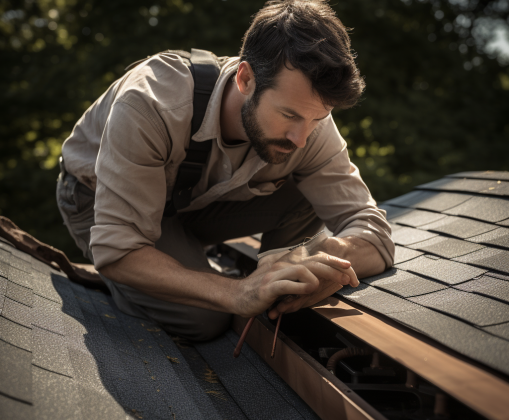
As a responsible homeowner, you have invested time and effort into maintaining your property. However, one crucial aspect that often goes overlooked is roof ventilation. Many homeowners need to pay more attention to the significance of proper roof ventilation. This article will explore why roof ventilation is essential, how it works, and how to ensure your home benefits from adequate ventilation.
Why Roof Ventilation Matters
Picture this: on a sweltering summer day, the sun is beating down relentlessly, causing the temperature inside your home to rise rapidly. You crank up the air conditioner, hoping to find some relief. Still, the electricity bill surprises you at the end of the month. What if I told you that proper roof ventilation could help solve this problem?
Roof ventilation is not just about staying comfortable but is also critical in preserving your home’s structural integrity. Inadequate ventilation can lead to heat and moisture buildup in the attic, creating an ideal breeding ground for mold, mildew, and even rot. Over time, this can compromise the roof’s integrity, leading to costly repairs.
How Roof Ventilation Works
Roof ventilation is a simple yet effective system that allows air to flow freely in and out of your attic space. It consists of two main types: intake vents and exhaust vents. The intake vents, often located at the eaves or soffits, allow fresh air to enter the attic. On the other hand, exhaust vents, typically situated near the ridge of the roof, facilitate the exit of hot, stale air.
In the summer, the temperature inside the attic rises as the sun beats down on the roof. Without proper ventilation, this trapped heat can seep into your living spaces, making your home uncomfortable and causing your air conditioning system to work overtime. However, with a well-ventilated roof, the hot air is efficiently expelled, helping to keep your home cooler and reducing the strain on your AC unit.
During the colder months, roof ventilation also serves another crucial purpose. It helps prevent the formation of ice dams, which occur when warm air from the attic melts snow on the roof, only for it to refreeze at the eaves. This process can lead to water seeping into your home, causing damage to walls, ceilings, and insulation. By maintaining a consistent temperature in the attic, roof ventilation can mitigate the risk of ice dams and their associated problems.
Ensuring Effective Roof Ventilation
To ensure your roof ventilation system is operating optimally, consider the following steps:
- Regular Inspections: Conduct periodic inspections of your attic and roof to check for any signs of moisture damage, mold, or inadequate ventilation.
- Proper Vent Installation: Hire a professional to install intake and exhaust vents in the appropriate locations for maximum airflow efficiency.
- Keep Vents Clean: Ensure that vents are free from debris, dust, or any obstruction that could hinder airflow.
- Insulate the attic Properly: Adequate insulation helps regulate temperatures in the attic and prevents heat from escaping during colder months.
- Consider Solar Attic Fans: Installing solar-powered attic fans can enhance ventilation by actively expelling hot air from your attic.
Roof ventilation is not a luxury but necessary for any responsible homeowner. It keeps your living spaces comfortable and prevents structural damage caused by heat and moisture. By understanding how roof ventilation works and taking steps to ensure its effectiveness, you can safeguard your home and enjoy the benefits of a well-ventilated living environment throughout the year. So, make roof ventilation a priority in your home maintenance checklist and ensure your property remains in excellent condition for years.
